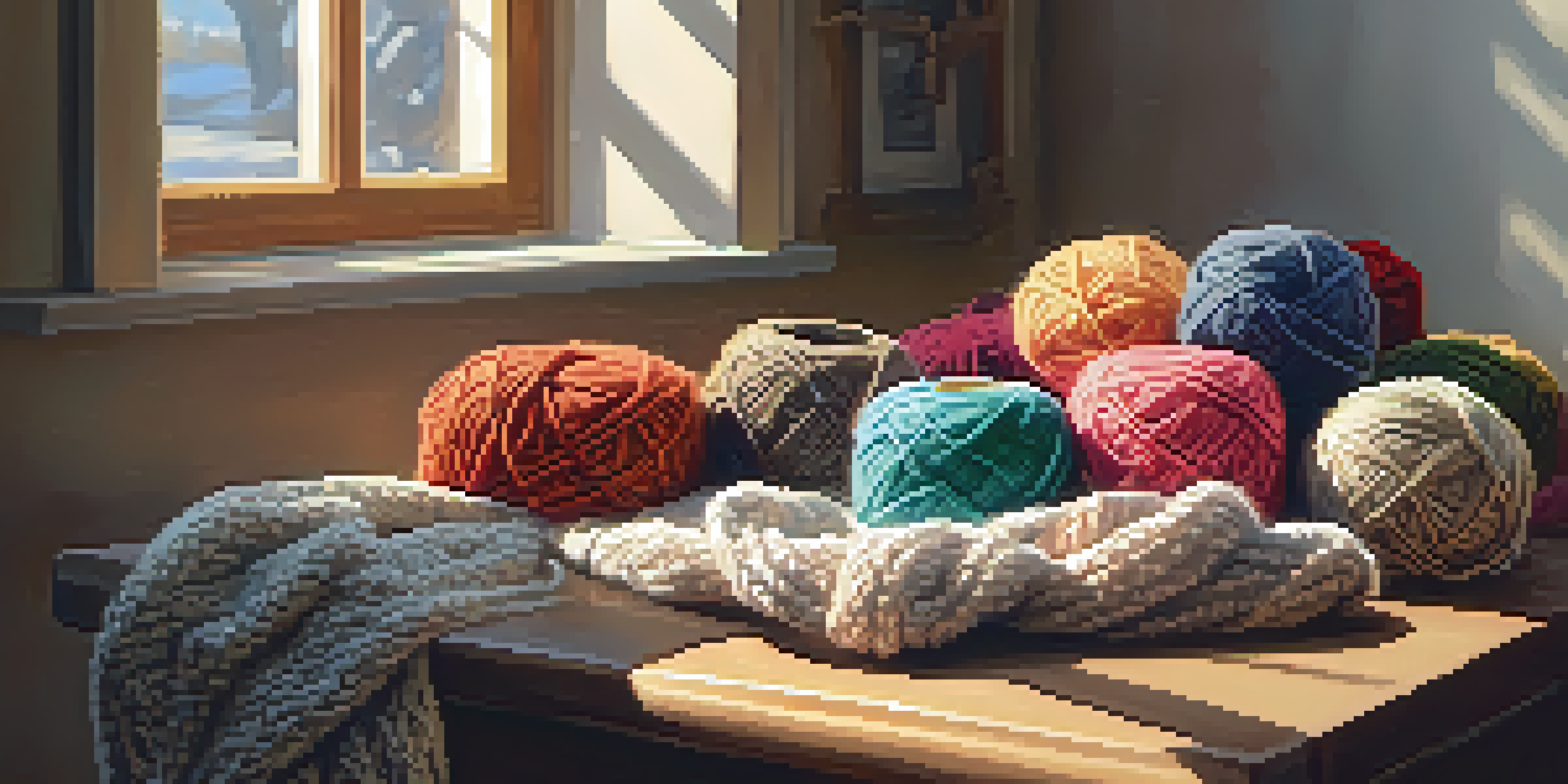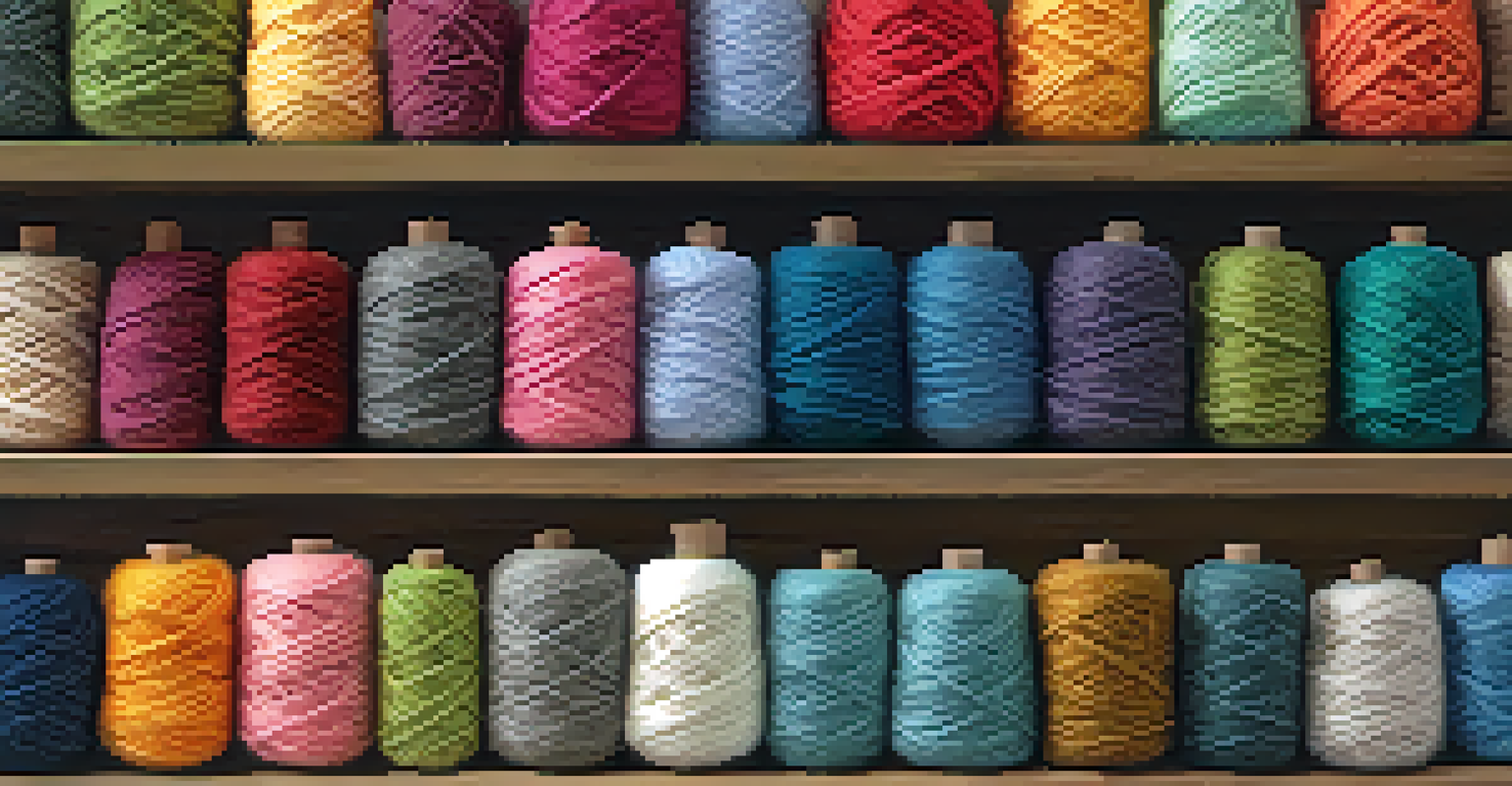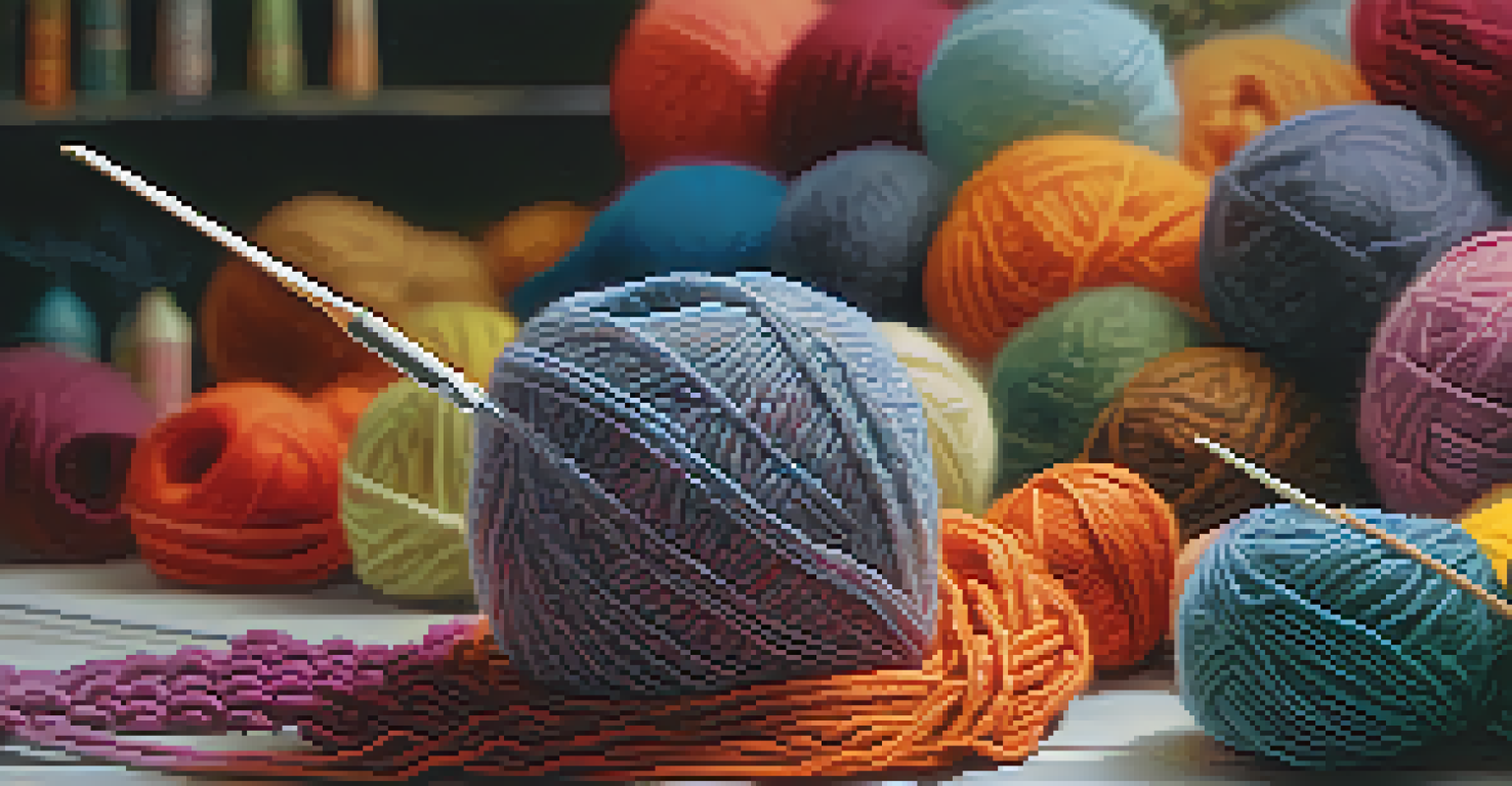Understanding Yarn Weight: Choosing the Right Material

What is Yarn Weight and Why Does It Matter?
Yarn weight refers to the thickness of the yarn, which plays a critical role in your crafting projects. From knitting to crocheting, the weight of the yarn influences not just the look, but also the feel of your finished piece. Understanding yarn weight can help you select the right materials for your desired outcome, whether you're aiming for a cozy sweater or a delicate shawl.
The best way to predict the future is to create it.
Different yarn weights are categorized from lace to super bulky, each suited for different types of projects. For instance, lace weight yarn is perfect for intricate, lightweight patterns, while bulky yarn is ideal for quick, warm projects like blankets. Knowing which weight to choose can save you time and effort, ensuring your finished product looks and feels exactly as you envisioned.
Moreover, using the correct yarn weight can affect your stitch definition and the drape of your fabric. If you use a heavier yarn for a pattern meant for lighter yarn, the results may not match your expectations. Hence, understanding yarn weight helps you select materials that align with your creative vision.
The Yarn Weight System Explained
The Craft Yarn Council has established a standardized yarn weight system that categorizes yarn into different weights, ranging from lace (weight 0) to super bulky (weight 6). This system provides a handy guide for crafters to make informed decisions when purchasing yarn for their projects. Each category has a recommended gauge and needle size, which further simplifies the selection process.

For example, worsted weight yarn (weight 4) is one of the most commonly used yarns. It strikes a balance between being thick enough for warmth while still being easy to work with for a variety of patterns. By familiarizing yourself with this system, you can navigate the craft store aisles with confidence and choose the right yarn for your project.
In addition to weight categories, yarn labels often include suggested patterns and needle sizes, which can be incredibly helpful for beginners. These labels are like roadmaps for your crafting journey, guiding you toward the best materials for your specific needs. Understanding the yarn weight system is essential for both novice and seasoned crafters alike.
How to Choose the Right Yarn Weight for Your Project
Choosing the right yarn weight involves considering several factors, including the type of project, desired texture, and the season for which the item is intended. For instance, if you're making a summer top, a lightweight yarn such as sport or DK (double knitting) would be ideal to ensure breathability. On the other hand, if you're crafting a warm winter scarf, a bulky yarn would provide the necessary warmth and coziness.
Creativity is intelligence having fun.
It's also important to think about the pattern you plan to follow. Most patterns will specify the recommended yarn weight, which can help you narrow down your options. However, don't be afraid to experiment; sometimes, using a different weight can yield unique and delightful results. Just be sure to adjust your needle size and gauge accordingly to match your vision.
Lastly, consider your personal preference and comfort level with various yarns. Some people prefer the feel of certain fibers and weights over others. Whether you love the softness of a chunky yarn or the delicacy of lace, the right yarn weight should resonate with your crafting style and enhance your overall experience.
Common Yarn Weight Types and Their Uses
Each yarn weight type has its unique characteristics and ideal applications. Lace weight yarn is typically used for delicate shawls and intricate patterns, while fingering weight is great for lightweight garments and accessories. If you're looking for something versatile, worsted weight yarn is a fantastic choice for a range of projects, from sweaters to blankets.
Bulky and super bulky yarns, on the other hand, are perfect for quick projects. They work up faster, making them ideal for last-minute gifts or cozy winter wear. If you’re in a time crunch but still want to create something special, these heavier yarns can be your best friend.
Additionally, specialty yarns, like textured or novelty yarns, can add unique visual interest to your projects. These can be used sparingly in combination with other weights to create stunning effects. Understanding the various yarn weight types can inspire your creativity and help you choose the right material for your next masterpiece.
The Importance of Gauge in Yarn Selection
Gauge is a crucial aspect of knitting and crocheting that refers to the number of stitches and rows per inch in your fabric. It's essential to match the gauge specified in your pattern with the yarn weight you choose. If your gauge is off, your finished project may not fit as intended, or it could turn out a different size than you anticipated.
To determine your gauge, simply knit or crochet a small swatch using the yarn and needles you plan to use for your project. Measure the number of stitches and rows in a specific area to see if it matches the pattern's requirements. If it doesn’t, you can adjust your needle size or yarn weight until you find the right combination.
Remember, taking the time to check your gauge can save you a lot of frustration later on. It's a small step that can lead to big rewards in ensuring your finished project turns out beautifully. So, don’t skip this step; it’s a vital part of the crafting process!
Tips for Working with Different Yarn Weights
When working with different yarn weights, it’s essential to adjust your techniques accordingly. For lighter yarns, you may want to use smaller needles and more intricate stitches to showcase the delicate nature of the material. Conversely, with heavier yarns, using larger needles can help prevent the fabric from becoming too dense or stiff.
Another tip is to pay attention to the tension in your work. Lighter weights can require a more relaxed tension to avoid tightness, while heavier weights might need a firmer grip to maintain structure. Experimenting with your tension can lead to more consistent results and a more enjoyable crafting experience.
Lastly, don’t forget to keep your workspace organized and well-lit. This makes it easier to manage different yarn weights and helps you stay focused, especially when switching between projects. By following these tips, you can navigate the world of yarn weights with ease and confidence.
Conclusion: Embracing the World of Yarn Weights
Understanding yarn weight is an essential skill for any crafter, whether you're a beginner or an experienced artisan. By familiarizing yourself with the various weights and their applications, you can make informed choices that enhance your projects. Remember, the right yarn can make all the difference in achieving the look and feel you desire.
As you embark on your crafting journey, don't hesitate to experiment with different yarn weights and techniques. Each project is an opportunity to learn and grow, so embrace the process and enjoy the creative freedom that comes with selecting the right materials. Your yarn choices have the power to bring your artistic vision to life.

In the end, crafting is about more than just the finished product; it's about the joy of creating. So, gather your materials, choose your yarn weight wisely, and let your imagination soar. Happy crafting!